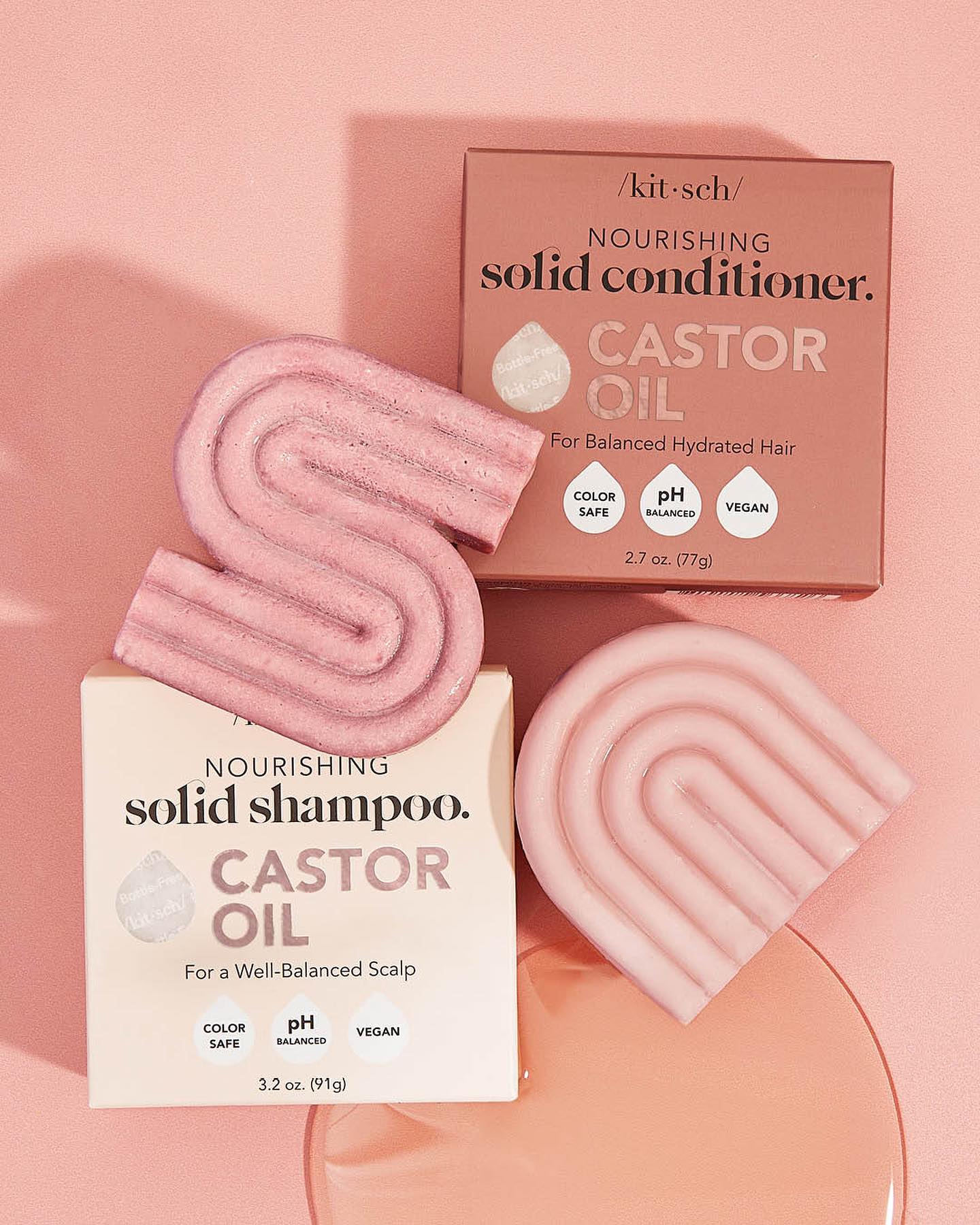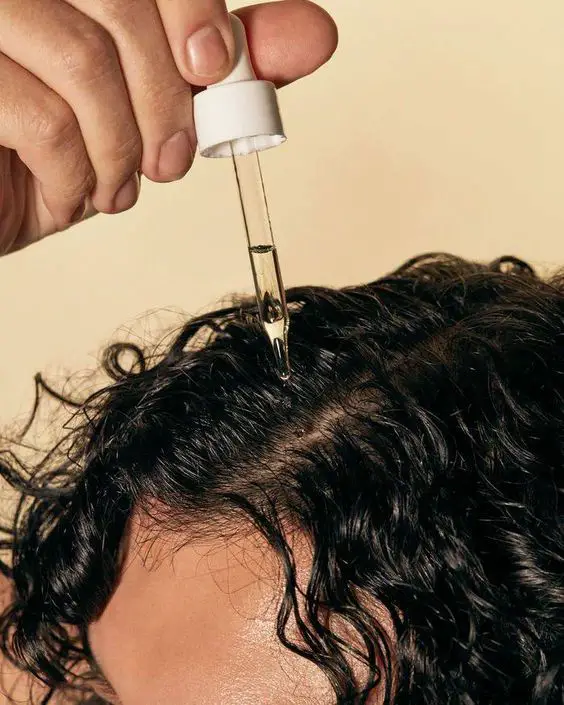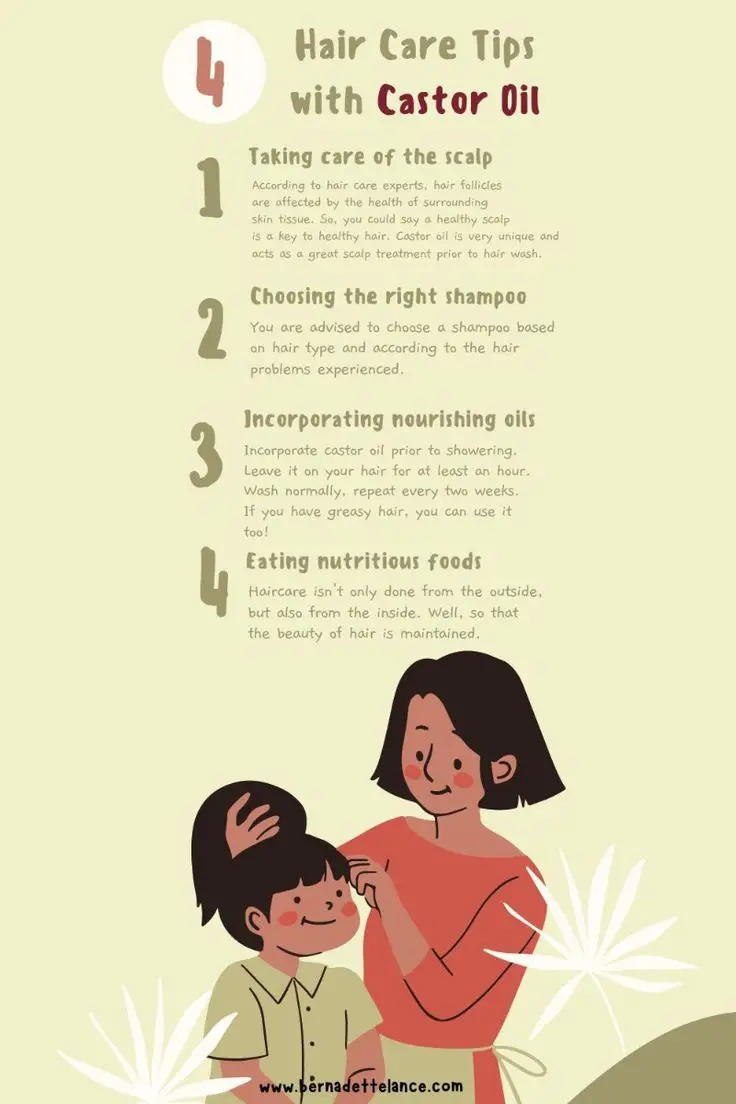7 Amazing Ways Castor Oil Helps Your Hair Grow Fast
Castor oil is well-known in hair care because it is thick, full of nutrients, and offers many benefits.
This natural oil comes from castor plant seeds. People have used it for hundreds of years in beauty and medicine. Today, many use castor oil to help hair grow, make it stronger, and keep it healthy.
Castor oil is full of ricinoleic acid and omega-6 fatty acids. These nutrients help feed your scalp and make your hair stronger. If your hair is thin, dry, or you just want it to look shinier, castor oil is a great choice. It is a flexible and effective part of many modern hair care routines.
What is Castor Oil?
Castor oil comes from the seeds of the Ricinus communis plant, which grows in tropical areas. This thick oil is rich in ricinoleic acid. Because of this, oil is widely used in hair care to help moisturize and strengthen hair.
Castor oil comes in two main types. Cold-pressed castor oil is made without heat, so it keeps its natural nutrients. Jamaican Black Castor Oil (JBCO) is created by roasting the seeds first, which makes the oil darker and thicker. Both types help with hair growth and support a healthy scalp. This makes castor oil a great option for many hair care needs.
Benefits of Castor Oil for Hair
Castor oil is well known for helping hair grow longer and thicker. It contains fatty acids like ricinoleic acid that deeply moisturize and nourish your hair. This keeps your hair soft, shiny, and healthy.
This strong oil helps lower dandruff and calm scalp irritation. Its natural anti-inflammatory and antimicrobial qualities soothe your scalp, making it healthier for hair to grow. Castor oil also makes hair thicker by strengthening each strand and improving overall hair fullness.
It also helps stop split ends, keeping your hair strong and healthy from the roots all the way to the tips.
How to Use Castor Oil for Hair
Castor oil is a natural and effective way to care for your hair. It helps nourish, protect, and make your hair stronger in many different ways.
Pre-shampoo treatment: Applying castor oil before washing helps shield your hair from the drying effects of shampoo.
Gently massage your scalp and hair, then let it sit for 15 to 30 minutes. This treatment seals in moisture and creates a protective layer, helping your hair stay healthy and well-hydrated.
Scalp massage: Massaging your scalp with castor oil often can boost blood flow, which helps hair grow. Warm a little castor oil in your hands, then gently rub it onto your scalp in small circles. This feeds your hair roots and can also lessen dandruff and soothe scalp irritation.
Overnight hair mask: For deep conditioning, apply castor oil to your scalp and hair before going to sleep. Focus on dry or damaged areas that need more care. Cover your hair with a towel or shower cap to protect your pillow. In the morning, wash your hair well with shampoo to remove the oil.
Leave-in conditioner: Castor oil works well as a leave-in conditioner to keep your hair soft and reduce frizz all day. After washing and towel-drying your hair, put a little carrier oil on the ends and dry scalp. Avoid the roots so your hair doesn’t look greasy. This locks in moisture, protects from split ends, and gives your hair a healthy shine.
Eyebrow and eyelash growth: Castor oil can help your eyebrows and eyelashes grow thicker and longer. Use a clean mascara brush or a cotton swab to put a little castor oil on your brows and lashes before you go to sleep.
How to Apply Castor Oil to Hair
Step 1: First, collect all the oils you want to use, including castor oil. Since castor oil is thick, many people mix it with lighter oils like coconut, jojoba, or olive oil. These lighter oils make it easier to apply and also provide extra nourishment for your hair or skin.
Step 2: In a small bowl, combine equal amounts of castor oil and your chosen oil. Change the ratio to fit your hair type. Use more castor oil for a stronger treatment. Add more of the lighter oil if your hair is fine or gets oily easily.
Step 3:
Warm the oil mixture gently. Place the bowl inside a larger bowl filled with hot water for a few minutes. Make sure the oil is only warm and not too hot. It should feel comfortable to the touch.
Step 4:
Part your hair into 4 to 8 sections, based on how thick it is. This makes it easier to spread the oil evenly. It also helps you cover every part of your scalp without missing spots.
Step 5:
Begin with a small section of your scalp. Use your fingertips or a brush to gently apply the oil blend. Massage in slow, circular motions to boost blood flow and support hair growth.
Step 6:
After applying the oil to all your hair, put on a shower cap or wrap your hair in a towel. This keeps in heat and moisture, helping the oil soak deep into your hair. Let it sit for at least 30 minutes. For even better results, leave it on overnight.
Step 7:
Once the oil has done its job, wash your hair well using a mild shampoo to get rid of all the oil. If you used a lot of oil, you might need to shampoo two times.
Step 8:
For best results, apply this castor oil treatment one or two times each week. If your hair is very dry or damaged, you can use it up to three times weekly. But if your hair is oily, using it once a week is enough to prevent too much oil buildup.
Potential Side Effects and Precautions
Castor oil has many benefits, but you should also know about its possible side effects. Always take care and use it safely.
Allergic Reactions
One main worry with castor oil is having an allergic reaction. While it does not happen often, some people might notice itching, redness, or irritation on their skin or scalp after using it.
Symptoms may be mild, like slight discomfort, or more serious, such as swelling or a skin rash.
Over-Application Issues
Castor oil is thick and heavy. Using too much can make your hair greasy and cause buildup on your scalp. It may also clog pores. Overusing it can weigh your hair down, making it look flat and dull.
To prevent these issues, apply castor oil in small amounts. After treatment, wash your hair well to get rid of any leftover oil.
Patch Test Recommendation
To lower the chance of allergies or side effects, it is best to do a patch test before using castor oil on your hair or skin. Put a tiny drop of castor oil on a small spot, like inside your elbow or behind your ear.
Keep it on for 24 hours and watch the area for redness, itching, or swelling. If you don’t notice any irritation, it is usually safe to apply the oil to a bigger area like your scalp or hair.
Alternatives to Castor Oil
Here are some other options you can use instead of castor oil:
Takeaway
Castor oil has many benefits for your hair. It helps hair grow, reduces dandruff, keeps hair moisturized, and stops split ends. To see the best results, use castor oil the right way. You can apply it before shampooing, leave it in as a conditioner, or use it as an overnight mask.
But it’s important to watch out for possible side effects like allergies. Always do a patch test before using it fully. Although more research is needed to prove how well castor oil works, its rich nutrients and long history make it a good choice for your hair care routine.
Other natural oils such as coconut, jojoba, and argan oil are also great choices. They can be used alone or with castor oil. Each one offers unique benefits for different hair types and needs.
FAQ
What are the primary benefits of using castor oil for hair?
Castor oil is known to promote hair growth, moisturize and condition the hair, reduce dandruff and scalp inflammation, thicken hair, and prevent split ends. Its rich composition of fatty acids, particularly ricinoleic acid, helps nourish the scalp and hair, leading to healthier, stronger hair.
How often should I use castor oil on my hair?
For most hair types, using castor oil once or twice a week is sufficient. If your hair is particularly dry or damaged, you may increase the frequency to three times a week. For those with oily hair, once a week should be enough to avoid excess oil buildup.
Can I mix castor oil with other oils for hair care?
Yes, castor oil can be mixed with lighter oils like coconut oil, jojoba oil, or olive oil. This not only makes it easier to apply but also enhances the overall benefits. Mixing oils can help tailor the treatment to your specific hair needs.
How do I perform a patch test for castor oil?
To perform a patch test, apply a small amount of castor oil to a small area of your skin, such as the inside of your elbow or behind your ear. Leave it on for 24 hours and monitor the area for any signs of irritation, such as redness, itching, or swelling. If no reaction occurs, it’s generally safe to use the oil on a larger area, such as your scalp or hair.
What are the potential side effects of using castor oil on hair?
Potential side effects include allergic reactions, such as itching, redness, or irritation. Over-application can also lead to greasy hair, clogged pores, or buildup on the scalp. Always perform a patch test before full application and use the oil sparingly to avoid these issues.
How do I apply castor oil to my hair?
To apply castor oil, mix it with a lighter oil if desired, and warm the mixture slightly. Divide your hair into sections and apply the oil to your scalp using your fingertips or a brush. Massage it in using circular motions, then work the oil down the length of your hair. Leave it on for at least 30 minutes, or overnight for a deep conditioning treatment, before washing it out thoroughly.
Can castor oil help with eyebrow and eyelash growth?
Yes, castor oil can promote eyebrow and eyelash growth. Apply a small amount of castor oil to your eyebrows and eyelashes using a clean mascara wand or cotton swab before bed. Regular use can help thicken and strengthen these hairs over time.
Are there any alternatives to castor oil for hair care?
Yes, several natural oils can be used as alternatives to castor oil, including coconut oil, jojoba oil, argan oil, and olive oil. These oils offer their own unique benefits and can be used alone or mixed with castor oil for enhanced results.




